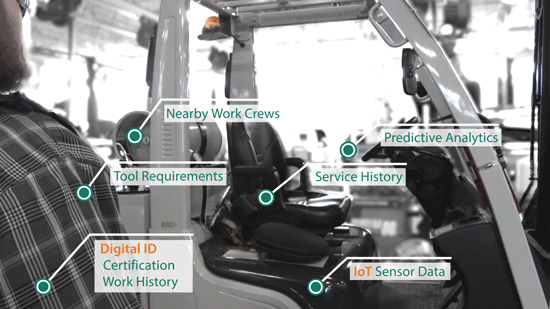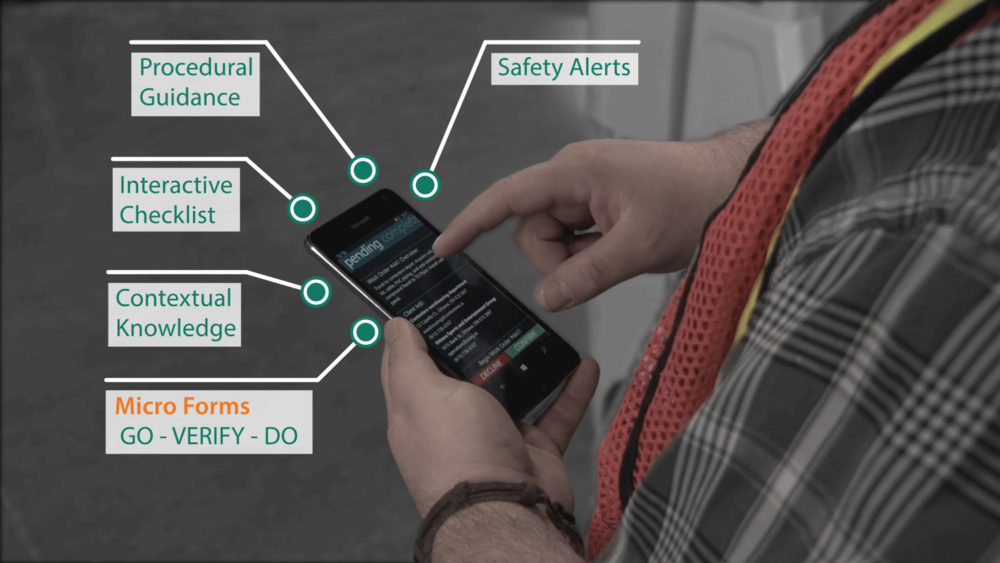A significant demographics shift, disruptive technology and ubiquitous digital transformations, and a continual need for reskilling, upskilling, and cross-skilling is leading to a global skills gap. Across the world, industrial organizations struggle to hire, train, and retain appropriately skilled workers. Lost knowledge and expertise through accelerating workforce retirement, characterized as ‘grey-out’, further exacerbates an already urgent problem. In 2015, the US Census Bureau noted that “people aged 65 and older will outnumber children under the age of five for the first time in history by 2020″. As a result, we can expect an increasingly large portion of the workforce to continue retiring, bringing with them their unique knowledge and creating an urgent need to capture and disseminate this knowledge to the broader organization.
Furthermore, in a 2012 global labor market study, McKinsey Global Institute estimated that the unmet demand for skilled workers would exceed 95M individuals by 2020. It is widely recognized that existing and forecast training capacity in educational institutions and private organizations will not be able to address this gap in the workforce. This problem is in sharp contrast to the estimated 75M unemployed (or underemployed) youth unable to earn a livelihood worldwide – a ready and able resource if enabled with the appropriate guidance and infrastructure.
At the same time, a 2017 Mckinsey study estimated that roughly 14% of the global workforce “may need to switch occupational categories as digitization, automation, and advances in artificial intelligence disrupt the world of work”. The studies mentioned above illustrate the dichotomy of the future of work: there is at the same time not enough employees to fill open positions and a transformation of jobs by disruptive technology. Furthermore, it highlights the need for private organizations, governments, and the educational system to develop methods that will provide a framework for continual learning to help close this gap. This is especially true as the half-life of skills is approximately five years now and continues to fall.

Tackling the Future of Work with AI
By combining human-centric machine learning (ML) and intelligent context curation, we can develop an intelligent personal agent capable of delivering actionable insights at the point of service that are customized to the user. Weaving together the power of AI and IoT data, it’s possible to give blue-collar workers the right information, at the right time on the right device.
Traditionally, the industrial worker is viewed as either the recipient of top-down decisions and pre-defined work optimizations (in the case of the enterprise software and analytics at the Centre) or is considered irrelevant to the process (in the case of Edge analytics and automation). Neither case considers the vital involvement and expertise of the industrial worker in the minute-to-minute decisions that are made in the operations and maintenance of complex remote machine assets.
contextere is focused on changing that dynamic. The contextere platform starts with the assumption that all the information needed to enable the industrial worker to conduct their jobs efficiently and effectively can be assembled and delivered on demand based on local context. With contextere:
- Individuals will function at a higher level of competency with less pre-training.
- Individuals will develop their competency on the job through a digital ‘master craftsman’.
- Companies can address their workforce shortages using less experienced workers.
- Companies can reduce or enhance corporate skills training with ML-based guidance.
- Shortcomings attributed to the disconnect between centralized ‘big-data’ analytics and field operating decisions will be reduced through contextual understanding and dynamic instructions.
A Human-Centric Approach
For example, as wearable and mobile devices become staples in our personal lives, they are also becoming more prevalent in industrial settings. Using the sensors on those devices, we’re able to determine an individuals’ competencies, information access authority, historical activities, and what other individuals, work teams, and machines may be in their vicinity. With this information, our ML algorithms gain a full understanding of the worker’s context and deliver curated information, helping the worker determine what to do next. This includes providing contextually relevant information, and integrated work instructions appropriate to their competency and the mobile device(s) they are using.
Over time, as individual competency changes through repeated actions, increased productivity, and training, or equipment performance data and enterprise analytics inputs change, we can apply ML algorithms to automatically adjust the work instructions that the worker receives to optimize their actions and match those actions to the conditions of the machines around them and the operational performance or production objectives of the organization. Ultimately, the worker can go to any location and be consistently delivered an individually tailored dynamic instruction of what to do next.
The intelligent personal agent will not replace the industrial worker. Rather, it will empower them to use their uniquely human skills: creativity, curiosity, and judgment. In this way, AI can be used to enhance the worker’s minute-to-minute decisions and free up their time to take on more complex tasks. To learn more, contact us to download our white paper:

